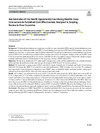Please use this identifier to cite or link to this item:
https://accedacris.ulpgc.es/handle/10553/114515
| DC Field | Value | Language |
|---|---|---|
| dc.contributor.author | Vallejo Torres, Laura | en_US |
| dc.contributor.author | Garcia-Lorenzo, Borja | en_US |
| dc.contributor.author | Edney, Laura Catherine | en_US |
| dc.contributor.author | Stadhouders, Niek | en_US |
| dc.contributor.author | Edoka, Ijeoma | en_US |
| dc.contributor.author | Castilla-Rodríguez, Iván | en_US |
| dc.contributor.author | García-Pérez, Lidia | en_US |
| dc.contributor.author | Linertova, Renata | en_US |
| dc.contributor.author | Valcárcel-Nazco, Cristina | en_US |
| dc.contributor.author | Karnon, Jonathan | en_US |
| dc.date.accessioned | 2022-04-29T09:46:28Z | - |
| dc.date.available | 2022-04-29T09:46:28Z | - |
| dc.date.issued | 2022 | en_US |
| dc.identifier.issn | 1175-5652 | en_US |
| dc.identifier.uri | https://accedacris.ulpgc.es/handle/10553/114515 | - |
| dc.description.abstract | Background: When healthcare budgets are exogenous, cost-effectiveness thresholds (CETs) used to inform funding decisions should represent the health opportunity cost (HOC) of such funding decisions, but HOC-based CET estimates have not been available until recently. In recent years, empirical HOC-based CETs for multiple countries have been published, but the use of these CETs in the cost-effectiveness analysis (CEA) literature has not been investigated. Analysis of the use of HOC-based CETs by researchers undertaking CEAs in countries with different decision-making contexts will provide valuable insights to further understand barriers and facilitators to the acceptance and use of HOC-based CETs. Objectives: We aimed to identify the CET values used to interpret the results of CEAs published in the scientific literature before and after the publication of jurisdiction-specific empirical HOC-based CETs in four countries. Methods: We undertook a scoping review of CEAs published in Spain, Australia, the Netherlands and South Africa between 2016 (2014 in Spain) and 2020. CETs used before and after publication of HOC estimates were recorded. We conducted logit regressions exploring factors explaining the use of HOC values in identified studies and linear models exploring the association of the reported CET value with study characteristics and results. Results: 1171 studies were included in this review (870 CEAs and 301 study protocols). HOC values were cited in 28% of CEAs in Spain and in 11% of studies conducted in Australia, but they were not referred to in CEAs undertaken in the Netherlands and South Africa. Regression analyses on Spanish and Australian studies indicate that more recent studies, studies without a conflict of interest and studies estimating an incremental cost-effectiveness ratio (ICER) below the HOC value were more likely to use the HOC as a threshold reference. In addition, we found a small but significant impact indicating that for every dollar increase in the estimated ICER, the reported CET increased by US$0.015. Based on the findings of our review, we discuss the potential factors that might explain the lack of adoption of HOC-based CETs in the empirical CEA literature. Conclusions: The adoption of HOC-based CETs by identified published CEAs has been uneven across the four analysed countries, most likely due to underlying differences in their decision-making processes. Our results also reinforce a previous finding indicating that CETs might be endogenously selected to fit authors’ conclusions. | en_US |
| dc.language | eng | en_US |
| dc.relation | ¿Cuánto debe un sistema sanitario pagar por mejoras en salud? - alineando preferencias de la población y restricciones presupuestarias | en_US |
| dc.relation.ispartof | Applied Health Economics and Health Policy | en_US |
| dc.source | Applied Health Economics and Health Policy [ISSN 1175-5652], n. 20, p. 337-349 | en_US |
| dc.subject | 531207 Sanidad | en_US |
| dc.subject.other | Economía de la salud | en_US |
| dc.title | Are estimates of the health opportunity cost being used to draw conclusions in published cost-effectiveness analyses?: a scoping review in four countries | en_US |
| dc.type | info:eu-repo/semantics/article | en_US |
| dc.type | Article | en_US |
| dc.identifier.doi | 10.1007/s40258-021-00707-8 | en_US |
| dc.identifier.scopus | 2-s2.0-85121876755 | - |
| dc.identifier.isi | WOS:000735340800003 | - |
| dc.contributor.orcid | 0000-0001-5833-6066 | - |
| dc.contributor.orcid | 0000-0002-6546-4186 | - |
| dc.contributor.orcid | 0000-0002-2447-4118 | - |
| dc.contributor.orcid | 0000-0002-7296-2335 | - |
| dc.contributor.orcid | 0000-0003-4268-3092 | - |
| dc.contributor.orcid | 0000-0003-3933-2582 | - |
| dc.contributor.orcid | 0000-0002-5626-8116 | - |
| dc.contributor.orcid | 0000-0002-0138-9252 | - |
| dc.contributor.orcid | 0000-0003-4833-7967 | - |
| dc.contributor.orcid | 0000-0003-3220-2099 | - |
| dc.description.lastpage | 349 | en_US |
| dc.identifier.issue | 3 | - |
| dc.description.firstpage | 337 | en_US |
| dc.investigacion | Ciencias Sociales y Jurídicas | en_US |
| dc.type2 | Artículo | en_US |
| dc.utils.revision | Sí | en_US |
| dc.identifier.ulpgc | Sí | en_US |
| dc.contributor.buulpgc | BU-ECO | en_US |
| dc.description.sjr | 1,017 | |
| dc.description.jcr | 3,6 | |
| dc.description.sjrq | Q1 | |
| dc.description.jcrq | Q2 | |
| dc.description.scie | SCIE | |
| dc.description.ssci | SSCI | |
| dc.description.miaricds | 10,8 | |
| item.fulltext | Con texto completo | - |
| item.grantfulltext | open | - |
| crisitem.author.dept | GIR Economía de la salud y políticas públicas | - |
| crisitem.author.dept | Departamento de Métodos Cuantitativos en Economía y Gestión | - |
| crisitem.author.orcid | 0000-0001-5833-6066 | - |
| crisitem.author.parentorg | Departamento de Métodos Cuantitativos en Economía y Gestión | - |
| crisitem.author.fullName | Vallejo Torres, Laura | - |
| crisitem.project.principalinvestigator | Vallejo Torres, Laura | - |
| Appears in Collections: | Artículos | |
SCOPUSTM
Citations
10
checked on Jun 8, 2025
WEB OF SCIENCETM
Citations
9
checked on Jun 8, 2025
Page view(s)
141
checked on Jan 18, 2025
Download(s)
51
checked on Jan 18, 2025
Google ScholarTM
Check
Altmetric
Share
Export metadata
Items in accedaCRIS are protected by copyright, with all rights reserved, unless otherwise indicated.
